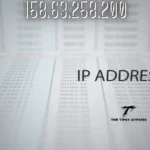Introduction to Telemetryczny
Have you ever wondered how data travels from remote locations to our screens in real-time? Enter telemetryczny, a fascinating technology that bridges the gap between distant systems and efficient data communication. As we dive deeper into this topic, you’ll discover its rich history, the mechanics behind it, and why it’s becoming indispensable across various industries. Whether you’re a tech enthusiast or someone curious about innovative solutions reshaping our world, understanding telemetryczny will open your eyes to endless possibilities. Let’s explore!
Discover insights that complement this topic perfectly — dive into our related posts!
History of Telemetryczny
The roots of telemetryczny can be traced back to the early 20th century. Initially, it was used primarily in military applications. Engineers sought ways to gather data from remote locations without putting personnel at risk.
As technology advanced, so did telemetry methods. The introduction of radio frequency transmission revolutionized how information was collected and analyzed. This breakthrough made it possible to send data instantly across great distances.
In the decades that followed, telemetryzny found its footing in various fields beyond defense. Space exploration became a significant area of application during the mid-20th century with missions like Apollo. Researchers depended on telemetry to keep track of spacecraft status and performance.
Fast forward to today, and we see an even broader adoption across industries such as healthcare, automotive, and environmental monitoring. Each sector has harnessed this invaluable tool for improved efficiency and insight into complex systems.
How Does Telemetryczny Work?
Telemetryczny operates through a systematic process of data collection and transmission. It begins with sensors placed on the subject or equipment being monitored. These sensors capture precise measurements, such as temperature, pressure, or location.
Once collected, this data is encoded and transmitted via wireless communication channels. This often involves radio waves or satellite signals for long-range applications. The choice of technology depends on the specific requirements of the system in use.
At the receiving end, telemetry software processes incoming data in real time. This allows users to visualize trends and anomalies quickly. Dashboards display critical information for immediate analysis.
Alerts can also be configured within these systems to notify users about any irregularities or thresholds being surpassed. With this setup, professionals across various industries maintain optimal monitoring with minimal intervention required from humans.
Advantages of Using Telemetryczny Technology
Telemetryczny technology offers numerous advantages that can transform how industries operate. Above all, it allows for immediate gathering of data as events happen. This allows organizations to monitor processes continuously, enhancing decision-making.
Another benefit is improved efficiency. Examining telemetry information helps businesses spot inefficiencies and improve workflow. This leads to significant cost savings over time.
Additionally, telemetryczny enhances predictive maintenance strategies. By tracking equipment performance, businesses can anticipate failures before they occur. This proactive approach minimizes downtime and extends the lifespan of machinery.
Furthermore, this technology supports remote monitoring capabilities. Teams can access critical data from anywhere in the world, facilitating faster responses to issues as they arise.
Enhanced safety is a vital advantage of telemetryczny systems. Continuous monitoring helps identify potential hazards early on, ensuring a safer work environment for employees across various sectors.
Uncover more exciting content and expand your knowledge with these handpicked reads.
Applications of Telemetryczny in Various Industries
Telemetry technology is adopted across multiple sectors, revolutionizing data gathering and interpretation. In healthcare, it allows for real-time monitoring of patients’ vital signs, improving response times in critical situations.
The automotive sector utilizes telemetry to gather performance metrics from vehicles. This data helps manufacturers optimize designs and enhance safety features.
In agriculture, farmers use telemetry systems to monitor soil conditions and crop health remotely. As a result, resources are used more efficiently, boosting overall output.
Telecommunications companies rely on telemetry for network monitoring. By analyzing traffic patterns, they can improve service reliability and customer satisfaction.
Even the energy sector benefits from this technology through smart grids that track electricity usage. These insights enable more efficient energy distribution while supporting sustainability efforts across communities.
Challenges and Limitations of Telemetryczny
Telemetryczny technology, while powerful, faces several challenges. One major issue is data security. As it transmits sensitive information, unauthorized access can lead to privacy breaches.
Another limitation is the need for reliable connectivity. Many telemetry systems rely on internet access or cellular networks. Interruptions in service can hinder real-time monitoring and data collection.
Cost also plays a significant role. Implementing telemetry solutions may require substantial investments in infrastructure and ongoing maintenance. This often creates challenges for small companies trying to get started.
Additionally, accuracy of data can vary based on sensor quality and environmental factors. Poor calibration or interference could result in misleading information that impacts decision-making.
Integration with existing systems poses its own hurdles. Ensuring compatibility with legacy software often requires extensive customization efforts and expertise.
Future of Telemetryczny Technology
The future of telemetryczny technology is poised for remarkable advancements. With the rise of the Internet of Things (IoT), data collection and analysis will become even more seamless. Devices equipped with telemetryczny capabilities will proliferate, enabling real-time monitoring across various sectors.
Artificial intelligence and machine learning are set to enhance data interpretation significantly. These technologies can predict trends and automate responses based on collected data, making systems smarter than ever before.
Moreover, as 5G networks expand globally, the speed and reliability of telemetrychny systems will improve drastically. This advancement opens doors for applications in remote healthcare, smart cities, and autonomous vehicles.
Security remains a priority as this technology evolves. Future innovations must prioritize robust encryption methods to protect sensitive information transmitted via telemetryczny devices. The next decade promises exciting developments that could revolutionize how we interact with our environments.
Conclusion
Telemetryczny has rapidly evolved from a niche technology to an essential component across various sectors. Its ability to collect, transmit, and analyze data remotely offers immense advantages for efficiency and real-time decision-making. As industries continue to embrace telemetri technologies, we can expect significant advancements that will address existing challenges while unlocking new opportunities. The future looks promising for telemetryczny as it continues to integrate with emerging technologies such as artificial intelligence and the Internet of Things (IoT). This synergy is likely to enhance its capabilities further, making it a pivotal player in shaping how businesses operate moving forward.
Don’t miss our spotlight stories — specially curated for your curiosity and interest!






